The British Army has taken delivery of the first fully UK-built Boxer armoured vehicle, a major step forward in one of the Army’s most significant modernisation programmes.
Produced by Rheinmetall BAE Systems Land (RBSL) at its Telford facility, the vehicle has now been delivered to Bovington, where it will begin service as a training platform. There, troops will learn to drive, operate, and maintain the new 8×8 armoured vehicle, which is set to become a mainstay of the Army’s future force.
The milestone comes as part of a £5 billion investment into 623 Boxer vehicles for the British Army, which will be delivered in multiple variants and are intended to equip the Army’s future mechanised infantry. The platform offers modularity, high mobility, and enhanced protection.
Around 75 percent of Boxer components are sourced domestically, and UK production is now underway at both RBSL in Telford and WFEL in Stockport. The Boxer programme is expected to support around 400 direct jobs in Telford and Stockport, and more than 1,000 across the wider UK supply chain.
Some initial production continues in Germany as manufacturing transitions to the UK. This move is consistent with the government’s drive to build domestic industrial resilience and expand British manufacturing capacity.
Defence Procurement Minister Maria Eagle said the project reflected the aims of the government’s Plan for Change and the forthcoming Defence Industrial Strategy. She noted that the programme “delivers both cutting-edge capability for our soldiers and high-value industrial benefits at home.”
The UK Boxer programme sits alongside procurement of 148 Challenger 3 tanks and the Ajax family of tracked reconnaissance vehicles. Together, these three platforms are expected to create and sustain over 6,000 defence manufacturing jobs across the UK.



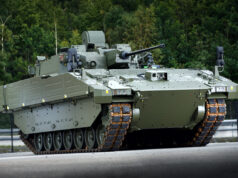
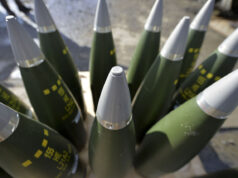
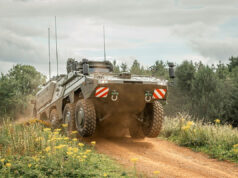
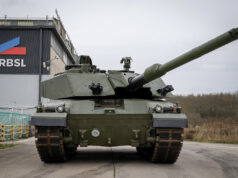

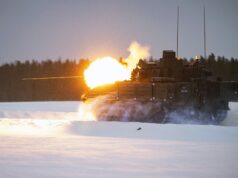



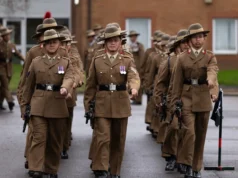

Great to see we won’t be investing in any £10 million pound tow trucks with boxer unlike Ajax but we will continue to invest in £10 million pound ambulances to save money on logistics.
Boxer is an amazing vehicle but the army needs to rationalise what variants are doing. It’s not CVR(t)
There are much cheaper and easier ways to provide support vehicles like the patria 6×6
Focus boxer hulls on capabilities like RCH155 were it is vitally important and cost effective.
Agreed, Patria 6×6 is the ideal battle taxi for large numbers of soldiers, using Boxer as an APC is not utilising its full potential and doesn’t represent good value for money (even if it is a very good APC).
Louis, Boxer is primarily an APC. That is why we bought it. Don’t see why you think that is limiting. We have ordered other variants too, of course.
Except that Role 1 Battlefield Ambulances actually end up really far forwards so having STANAG level 6 does actually make sense.
FYI level 6 is for the front slope, otherwise it is level 4 on sides and rear
To be fair to Ajax, I spoke to some RTR guys a month or two ago and they said they’re running well now- gun’s pretty good too. I’ll be honest, with the way that the fighting looks in Ukraine, heavily armoured scouts that can support infantry with an autocannon may stand as not the worst idea.
I agree with you, though, we could certainly do with reviewing the types and uses that we’re planning for both Ajax and boxer platforms…
Not so sure on that. Any armoured vehicle being used in the Ukraine war is being rapidly targeted by drones dropping RPG rounds. With no form of active protection systems they would be canon fodder. Kinda want to drop the troops off and get out fast
The RUSI reports I’ve seen suggest that FPVs aren’t as effective against mobile armoured units as the videos we see imply. A lot of the kills are of immobilised vehicles (mines, ATGMs, artillery), or FPV number 5, 6, or even 10.
I’m basing the statement off how popular Bradley and CV-90 are with the Ukrainian soldiers. They are indeed used to get in and out again, but they’re built (like Ajax, I believe) to take a few RPG rounds without turning into a mobile crematorium. They’re also used to provide indirect fire support to assaults (with the 40 mm Bofors on the CV-90, surprisingly), and with the ATGMs (Ajax really needs a box launcher for ATGMs).
Also, drones can’t and don’t fly all the time- due to weather and EW, making ideal windows for fast and hard assaults using units like Ajax supporting infantry. We don’t see that so much, because neither Russia or Ukraine have the depth of reserves ready to jump on such opportunities, but we did get a glimpse of it in the Kursk offensive, and it was very effective.
Some of the tactics used by the Ukrainians is astonishing. Sprinting to a Russian trench system, then disgorging your pax right on the edge whilst a supporting IFV drives up and down firing down in to the trench. Not sure that was ever envisaged with Warrior? The manually clip loaded Rarden would be a embuggerance, compared to the CV90’s and Bradley continuously fed autocannons.
I am a bit surprised Ukraine hasn’t reached out to Israel for Trophy or Iron Fist. APS, along with EW is another part of the chain to deny drones.
Very much this, I suggest paying attention to how many of the videos we see of drones killing AFV’s are vehicles that are either M-killed or abandoned with their hatches open. That doesn’t mean they don’t hit moving armoured vehicles or even destroy them, but my vague feeling is that Mines and AT Drones are a very good combination, with the drone taking up the role that AT guns or even Dismounted Infantry with Carl G’s or Bazookas would have done in the past with considerably more risk and less speed.
The Kursk offensive is very interesting, the Ukranians very much showed what a future combined arms offensive might look like: Operational Deception, EW, Drone superiority (In a NATO context I assume this would come with air superiority) to strike in the brigade deep, SOF infiltration and traditional combined arms armour moving fast under that umbrella.
Agreed- especially with the anti-drone armour and portable EW, it’s a lot easier to hit and kill an immobile vehicle in a key area when you lose signal ~10 m out. As you say, it’s a lot better doing that out to 6 km, rather than whatever the top range of a CG is..!
I was really surprised at how effectively Ukraine was able to maintain the mobile element in Kursk- and have the Russians unsure of their exact location and thus capitalise on that. I’d thought ISR would have made that next to impossible. As you say, NATO will have some additional strengths to bring to the party, but some food for thought on future tools and methods.
From what I’ve seen it was a good amount of Operational deception. The ZSU loudly broadcast that they expected a Russian offensive from the North and then disguised their maneuver forces as a counter attack reserve which the Russians apparently discounted. Once the movement started by the sounds of it, Ukrainian EW and GBAD swept the skies of Russian ISR assets, and then air superiority was maintained by drone units.
Steve, don’t think dismounted troops are safe from drone attack. On the battlefield, I would rather have armour around me than not.
In many ways modern tank , modern afv and reconnaissance vehicles are a bit obsolete for today’s modern battlefield with drones, satellites, stand off weapons . A new hull designed from scratch to properly embrace cages and vulnerabilities such as being hit from rear or top should be designed that can be designed as heavy troop carrier or medium heavy armoured vehicle is xrying out to be built and then just build q00s of them to standardise the heavy to medium units . That’s what me thinks
Joe, Scout vehicles operate by stealth if possible some considerable distance in front of infantry. They are in the wrong place to support infantry. We would need to buy many more Ajax to have sufficient to release to work closely with the infantry as a fire support asset.
Thanks Graham, and fair point made in terms of official doctrine for the vehicle.
I was thinking of some of the Strike concepts that did the rounds a few years ago, and the Kursk operation; Strike had (if I understood it correctly) Ajax providing the armoured support to Boxer-mounted troops operating dispersed and potentially behind enemy lines- or at least in and around around a less defined band of areas of control (which is roughly what happened in Kursk to a degree).
I honestly don’t know how that matches up with what the British Army is planning on doing with them in 2025- I would expect you know better than me!
Thanks Joe, you are right that that was the concept (Ajax giving fire support to Boxers) for the two Strike brigades that never came to fruition. Those Strike brigades were very different to the armoured brigades of course which had tanks and Warrior IFVs working together against an enemy with tanks and IFVs. The Strike brigades would have been ranged against a somewhat lesser threat. Strike brigades were in 3 (UK) Div and could deploy with the rest of that Div or outside it, perhaps in Out of Area operations much as the French did in Mali with their version of strike or medium-weight brigade.
I don’t see those Ajax/Boxer Strike brigades as suitable for launching a Kursk type operation – the Boxers would not give a good account of themselves against cannon and ATGW-equipped BMP IFVs, and Ajax would be outgunned by T-series tanks.
Ajax are of course to be found doing Formation recce (used to be called medium recce) – they should be well forward providing recce for Div Comdr and HQ, but no Armoured Cavalry (Ajax) Regiment (ACR) has been assigned to do that quite bizarrely!! Each of the two Armoured Brigades have an Ajax regiment forward doing similar for the Bde Comd and HQ.
There are currently two armoured cav regiments in the Deep Recce Strike Brigade but that could well be restructured in future.
Each armoured (tank) regiment has its close support recce in Ajax. Currently AI battalions in the armoured brigades with Warrior have close support recce (was CVR(T) Striker and would be Ajax if WR had been retained as an upgraded vehicle).
So in summary there are currently planned to be 4 x ACR regiments with Ajax (one with each armoured brigade and two with the DSR brigade) and other Ajax doing CS recce for the Infantry in the armoured brigades – those infantry currently in Warrior will in future have Boxer. But that is the Future Soldier Orbat which is now 4 years old and long in the tooth.
There is discussion about adapting ARES to be some sort of IFV, and also talk of Boxer going to at least one of the mech bdes in 1 Div. Who knows if that will happen and if it changes Ajax allocation and tasking?
the Conemp for 1 DSR was that the Ajax regiments would effectively be at the Divisional Commanders disposal, or the Brigade commander would operate them in the Medium Recce role on behalf of the Divisional Commander.
Apparently there’s been some rumours on Twitter about the future force structure leaking, but I mean we all know what rumours are like a times like this.
Joe, now answer honestly, would you want to be doing forward recce in advance of the the zero line on a Ukrainian battlefield?
In an Ajax vehicle?
Would I like to be? No.
Would I rather be doing it in Ajax instead of CVRt or even Warrior? Yes.
But, as I said a few comments up, I do think we get a slightly distorted view of what combat against a peer would look like from looking at Ukraine. There are definitely lessons to be learned, of course. But the Ukrainian battlefield is so lethal because it’s so stationary and Russia in particular doesn’t have the resources or the expertise to do anything other than grinding assaults into the teeth of artillery and drones. The British army just wouldn’t put assaults in like that- so Ajax wouldn’t just be rolling into a minefield hundreds of metres deep, over watched by drones 24/7.
Fair comment Joe – perhaps if we were fighting against a peer we would be seeing swarms of AI driven autonomous hunter killer drones deployed as area denial weapons. Many variants envisaged. Whilst I don’t think A vehicles are dead; as some are saying. I am inclined to think that the days of forward recce in manned A vehicles is over – certainly not a role I would volunteer for.!
You’re probably right, eventually.
At the moment, though, poor weather grounds drones and renders them pretty ineffective as a threat during those times- and EW does similar, even for the larger high flying ISR types (which can’t be controlled via fibre optic). UGVs may be slightly different, in terms of being ‘mobile gun positions’ that could fulfil the area denial mission you envisage. But they are perhaps more easily engaged by the attacking armoured force.
It will be very interesting to see what comes in the next 5-10 years, but I do agree that there will be fewer and fewer people at the ‘tip of the spear’ of armoured formations.
I presume rightly or wrongly that the majority of Boxers will be the bargain basement version without a turret?
No turreted modules have been ordered.
No surprises there, like I said, bargain basement version……
Hardly a Bargain basement version…
Sadly, it is. Why are we not getting vehicles with turrets and guns? It’s not a case of not wanting them, it’s simply down to cost and the UK government expecting our service personnel to make do with the bargain basement version of just about everything.
Calling a 6million Euro vehicle “bargain basement” is stupid and kind of shows that you’re not having a serious discussion. Boxer, yes even the turretless version is anything but, it’s a very expensive, very high end, gold plated vehicle, and if anything there needs to be a cheaper alternative to it.
Agreed Dern, what is the all price of a drive vehicle with a turreted module using 30mm cannon or sky guard module?
Paul, Yes – the Boxers we are getting are not turreted, as they are MIVs. They are just the £5.35m (cost ammortised) vehicles.
There is no such thing as a bargain basement boxer..they are all profoundly expensive and simply the pest protected APC around.
Wow just one, job done then, when was boxer first ordered? how many German made one are already in service?
Not bad. From it’s original inception it’s only taken us 26 years to get this one. Another one next year?
And the Army managed to achieve the complete destruction of sovereign A vehicle capability in the UK with GKN, Alvis, BAE et al all consigned to history! RBSL promised 4,000 highly skilled development engineering and integration jobs, where are they? On Boxer we have no design control and are in fact just a glorified fabricator, as far as I understand MoD are not even competing the modules for UK design and manufacture! We don’t have control or even all the mechanical interface date to do so. Everything on the vehicle is foreign, engines, wheels, tyres, Steel. WFEL & RBSL are German owned even the parts being manufactured in the UK like the angular gearboxes by Horstman now German owned by Renk.
Tragically, there are no signs of us learning either. On and on we go acheving nothing but endless money spinning projects for sometime/never.
Tragic isn’t it? the Design authority of pretty much Britains entire vehicle fleet is now controlled by German & US companies. Boxer is painted in a Union flag but is German controlled- I’m not even sure we have the interface data to allow MoD to compete the modules. RBSL promised 4,000 Highly skilled engineering and integration jobs – possibly one thousand jobs of all types delivered-Why are jobs and offset not contractually binding? We sell our souls soo cheaply time after time after time. Splashing billions in taxpayer funds to foreign companies and governments then claiming the result is British absolutely imbecilic
It is tragic. Decades of contrived mergers and nationalisations that have acheived nothing. Only the private sector has flouished and that in many cases is in spite of successive goverments.
I’m hoping as the Ajax and Boxers were ordered both before Ukraine and the budget uplift that we’ll see a substantial uplift in orders in the Autumn. If we’re going to expand our capabilities it makes sense to order stuff that has a hot production line.
I wouldn’t hold your breath, 2.5% won’t buy you a substantial uplift…
Expect nothing but tinkering on the edges and a lot of bullshit baffles brains…
History is on your side there. Although it should be going above 2.5% in the 2030’s and any additional orders will see production going into the new decade.
Hey guys, what does money mean when after two years you are unaccountable?
Uniformed personnel need to be linked to programmes for 5 years and project outcomes referred to in their Ojars not simply walking out the door, not my party attitude.
Too easy with the current system to be held unaccountable for failure.
Spot on SRO should have ten year tenure and be rewarded appropriately
From what I’ve read on the Ukraine conflict it seams silly to have such an expensive vehicle with at 25-30mm auto to protect itself against drones.
The UK hasn’t ordered any turreted modules so no 20/30mm for the British Army. If they do the orders will all go to foreign companies unless Pearsons (now an Israeli company) is allowed to build the Israeli turret locally
A refreshing change to read about something actually being delivered.
My concern is the repair logistics. I was an Artificer REME from the Mid 80’s. Challanger 1 was well supported. However, it was very evident that Vickers hadn’t considered many of the in theatre required repairs. And don’t get me started on BDR. (Battle Damage Repair).
And the big thing now is that if a repair is required, especially some of the more complex repairs, manufacturers state that it has to be carried out by their own engineers. Can’t see them anywhere in the front line.
Terry, good to hear from a fellow ex-REME. Is it really the job of an OEM to think through and plan for in-theatre Level 4 repairs? Should have been considered by the ILSM when it was a Project and later by the ESM when it was in service, I would have thought.
I did not deploy on GW1, but some of my guys did. I recall that the Vickers role was primarily designing, developing and fitting TES kit before action was joined. Aside from that, did they do repairs in-Theatre? What type of repairs did they do that REME tradesmen were unable to do?
Coming up to date, do you have any examples of these complex repairs that must only be done by manufacturers?
The flow rate of these vehicles is too slow, and with just 60 built per annum, it will be a protracted project. The good news, Warrior/FV Bulldog will be hanging around for a few more years yet. Sadly, if World tensions weaken and the treasury starts interfering the flow rate could be even slower.
So it will take 10 years to meet this requirement? That takes slow to an all new level!
Some commentators say 100 per annum. Like Ajax and its derivatives, the flow rate will be adjusted to meet the need, and right now, the Ukraine War is demanding greater urgency by the MOD, especially for remote systems. If, however, tensions ease, the treasury will be pressing the UK Government to moderate spending it always does, hence the poor state of the Army today.
Also remember that the slowness is considered a feature not a bug: By making only about 100 a year you ensure that the production line is up and running for 6+ years.
Dern, I agree, however, the Army needs these vehicles both for training and familiarity, plus the ongoing war in Ukraine means the UK must modernise at pace. In regards to 6+ years of employment, I feel sure that follow-on orders are a distinct possibility, hence an extended production period.
Maurice, how is it good news that Bulldog stays in service for very many more years? – the base vehicle is 60 years old. Assuming Boxer Ambulance and Mortar carrier replace Bulldog, they’ve got to be so much better.
Graham, because they are venerable, plentiful and reasonably reliable, the B-52 of land machines. The Boxer flow rate is too pedestrian, considering the current dangers, and maybe the MOD should investigate at least 100 vehicles being built in Germany. Currently, 600+ Boxers are being ordered, plus anything from 116 – 200 howitzer-based guns, making a fleet of 700+ by around 2030. This number is impressive, but delivery will be pedestrian; thus, the retention of Bulldog and Warrior to 2027 at least if not longer, is good news for these two old comrades.
I wouldn’t describe Bulldog as reliable.
Hasn’t Turkish armoured vehicle manufacturer Nurol Makina opened a plant in Lemington Spa? Where do their offerings fit in? Is this a quid pro quo for TÜrkiye ordering Typhoon?
It could well be quid pro quo, as they are in the running for a Humvee equivalent for the UK Army as a partial replacement for Bulldog, but mostly the Land Rover Defender. It should also prove to be a suitable replacement for the Panther, which is still in service according to a recent YouTube video. A decision is due in 2026, is my understanding.
FV432 will be pootling along on the moon in 2100. It’s eternal.
The MOOG RIWP turret would be a great solution for the infantry, GBAD and others with its interchangeable weapon pods the possibilities are virtually limitless and future proofed. It would at the very least give the infantry more offensive and defensive capabilities.
It would be interesting to see if the turret could be fitted with the CTAS 40. As this would give it more logistical commonality with Ajax.
A milestone to be celebrated; the result of a lot of work by RBSL workers, Rheinmetall, BAE, UK and German governments of various colours. Kudos all round. 👏 Just need to crack on with production and additional variants now.
All contractors are pretty much German or French even the the steel isn’t British – No design or UK control we are just a a glorified fabricator
Well, we let skils go; beggars can’t be choosers. We are the apprenttices and Rheinmetal are the master craftsmen. We should be grateful for the training and friiendship. Bit of humility goes a long way.
Assembly & fabrication only adds cost and zero value. Unless there is a strategy and UK Defence industrial plan we are paying millions of pounds to allow a German company to paint a union flag on a German vehicle – strategically and economically it’s a nonsense
The contract was signed on 4 Nov 2019 – it has taken nearly 6 years to get the first British-made one off the line and delivered, albeit others from the German line have previously been delivered. Only 623 ordered so far against an army requirement for about 1200-1400 as I recall. Delivery might be 85-100 per year.
It’s worth recalling that Boxer was selected without a competitive evaluation against other MIVs.
“When we looked at the marketplace, the Boxer was the standout vehicle, and procuring through OCCAR (Organisation for Joint Armament Cooperation) offers us a lot of value in the way we can acquire that vehicle,” Lt. Gen. Paul Jaques, the MoD’s chief of materiel (land) told the parliamentary Defence Committee on April 24.
Jaques said the Boxer was chosen without competition because it is the best protected vehicle available, has the best power-to-weight ratio, has the best mobility and has proven its reliability in service with the German military in Afghanistan.
Rivals had questioned the high costs of the Boxer, but to that point, Jaques said: “It offers us the best value for money, taking together performance and cost.” Source – (US) Defense News, Apr 24, 2018
To put things in a little more context, the German Forces operated mostly in the Kunduz and Balkh provinces of Northern Afghanistan. However, this later covered other provinces right up to Kabul. They had significant mechanized forces in country, including Pz2000, Marder, Boxer, TPz Fuchs, Fenneks, Dingos and even Weasels. I believe the thoughts were that German Forces would operate in a more policing role, as the Northern part of Afghanistan was not traditionally Taliban. However the Taliban had different ideas. German Forces were engaged in a number of major actions individually and in collaboration with other ISAF/NATO Forces.
From my experience, we heard the Fenneks didn’t do to well when attacked by IEDs. The Marders had an upgraded armour package, that included significant underbelly protection. I didn’t hear of any Boxer losses. There were quite a few Dingo losses, but in the main the passengers survived IED attacks. Surprisingly the Weasels did pretty well, as their 20mm autocannon provide excellent fire support. I didn’t see any other versions, but heard they were using other variants.
From what I understand the Germans used the A1 version of the Boxer, but included additional armour, particularly underbelly armour. The APC version was armed with either a M2 or 40mm GMG in a remotely operated turret. The lessons learned from operating in Afghanistan were incorporated in the the A2 version. We are getting the A3 version, which is more in keeping with the Australian requirement. So it gets a more powerful engine and a higher STANAG armour protection. Putting it more in line with a top flight IFV. The additional protection doesn’t come cheap and makes the vehicle heavier than the earlier versions.
In effect the Boxer we are getting is built with lessons learned from operating in Afghanistan, which may be considered asymmetric in nature, but a RPG-7 is still highly effective if launched by a soldier or a untrained militant. Similarly the Boxer will have much better crew/passenger protection from mines and IEDs, than say something like the Patria 6×6. Its something to bear in mind before going all in a “cheaper” vehicle.
Just to elaborate: Germany definitely went into Afghan looking to do a humanitarian/policing mission. It was their first military deployment out of Europe, and first boots on the ground deployment at all since 1945, and there was a lot of public pressure for them not to go into a military occupation and war. But if the Bundeswehr shared the feelings of the Bundestag on the matter they very quickly changed their mind, the Policing aspect very much became a thing for public consumption, rather than a fact on the ground, early on.
In fairness the Army did run the MIV selection like three times, and each time Boxer was the preferred option, I’d suspect that off the records the reason Boxer got picked without competition was because the Army already knew from those previous trials that Boxer was what they wanted.
The 1400 requirement was an estimate from before warrior upgrade was cancelled.. it’s probably more like 1600-1800 in reality. Although I cannot see that happening, boxer is just to expensive..I suspect there will be a second slightly inferior APC ordered at around 1-2 million per pop instead of 5.5 million. You just don’t want a 40 ton beast with organic STANAG level 6 armour for every job. I suspect they will go for a second APC at the 25ton mark with STANAG 3-4 that can be upgraded in theatre to STANAG 6.
Saw Boxer on a trailer going North on M1 Tuesday.
Must have been this one.